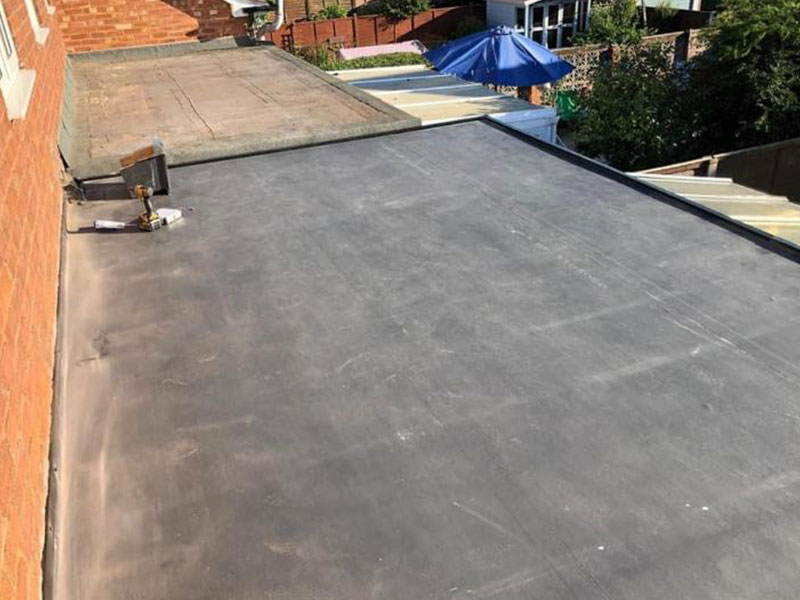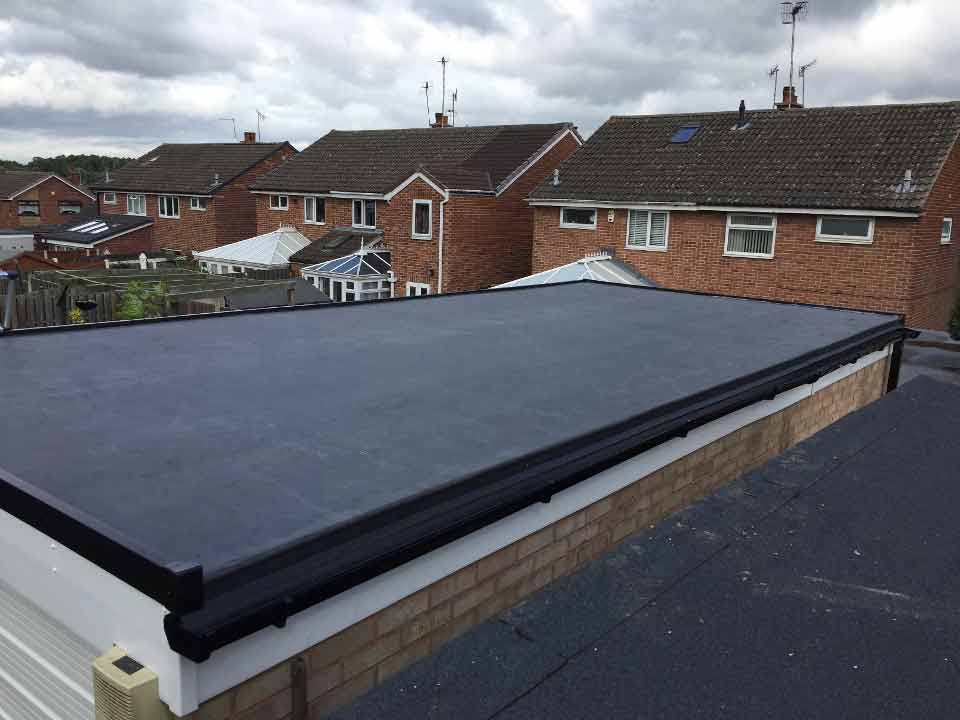Flat roofing has become an increasingly popular choice for commercial and residential buildings in recent years. The advantages to flat roofs are numerous, from lower installation costs to better insulation options. However, it is important to be aware of the common problems associated with flat roofing before making a decision about its use.
This article will discuss some of the most common issues that arise with flat roofing systems and how they can be addressed. Flat roof systems are complex structures that require careful maintenance and inspection in order to maintain their effectiveness over time.
Common issues include pooling water, punctures, cracks, or splits in the membrane, damaged flashing or sealants, and poor drainage. These problems can range from minor annoyances to serious structural risks depending on their severity and the amount of damage they have caused.
Understanding the causes and solutions for these issues is essential for proper installation and ongoing maintenance of a flat roof system.
Overgrowth Of Vegetation
One of the most common issues that arise with flat roofing is the overgrowth of vegetation. This can be caused by sporadic weather, allowing for plants to take root on the surface.
Poor drainage can also cause this issue, as moisture can become trapped in the material and create an environment suitable for plant growth. If left unchecked, the vegetation can wear down the surface of the roof and create holes or cracks around seams and joints, leading to further damage.
Additionally, UV damage from prolonged exposure to sunlight can weaken membranes and coatings which will eventually cause them to break down or bubble up when exposed to water. It is essential that these issues are addressed quickly otherwise they will only worsen over time.

Faulty Repairs
Faulty repairs can be a major contributor to flat roofing problems. Inadequately installed materials and unsuitable materials can lead to severe damage, especially if the roof has to withstand extreme weather conditions. Poorly installed roofing systems may not be able to provide adequate protection against water intrusion, leading to leaking and other moisture-related issues. Unsuitable materials may not be able to withstand the weight of snow or hail, resulting in sagging or buckling of the roof’s surface. Additionally, such materials may also fail to provide sufficient insulation during cold months as well as sufficient ventilation during hot months, leading to increased energy costs for the building owner.
The next problem that needs attention is standing water on the surface. This occurs when water does not properly drain from the roof’s surface and accumulates instead. This can lead to serious consequences such as ponding, where large amounts of standing water can cause considerable damage to existing rooftop structures and systems.
Furthermore, this issue can also encourage the growth of moss and algae on the roof’s surface which can further degrade its integrity over time.
Standing Water On The Surface
Flat roofing problems can often be caused by standing water on the surface. This can occur due to blocked drains, thermal expansion, and/or accumulated debris.
Blocked Drains: Poorly maintained drains can become blocked with debris or sediment, preventing the efficient removal of water from the roof surface. This can cause puddles or pools of water to remain on the roof for extended periods of time, leading to premature wear and tear on the roofing material.
Thermal Expansion: As temperatures fluctuate throughout the day, materials will expand and contract. If there is a large amount of water present on a flat roof during periods of high heat, it may not be able to evaporate quickly enough or drain away in time before it cools again. This could lead to warping or damage to portions of the roof system due to prolonged exposure.
Accumulated Debris: Debris such as leaves, twigs and other organic matter can accumulate over time on flat roofs if they are not regularly cleaned off. When combined with rainfall or snowmelt, this debris will act like a sponge and absorb more moisture than normal into it’s fibers. As this moisture builds up over time it can saturate portions of the roofing material and cause deterioration and discoloration.
These are some of the most common causes for standing water on flat roofs that can lead to further damage if left unaddressed. To avoid these issues it is important to regularly inspect your flat roof for signs of wear and tear, as well as keep an eye out for any blockages in your drainage system so you can ensure maximum performance from your flat roofing system over time.
Accumulated Debris
1. Clogged gutters are a common flat roofing problem due to the accumulation of debris from trees, plants and other sources.
2. Drainage blockages can result from the accumulation of debris on the roof surface, blocking drain outlets and causing water to build up on the roof.
3. Unwanted pests such as birds and rodents can enter the roof space through cracks or gaps, and the accumulation of debris can provide a nesting area.
4. Accumulated debris on a flat roof can reduce the efficiency of the drainage system and increase the risk of water pooling on the roof.
5. Regular cleaning and maintenance of the gutters and drainage systems can help to reduce the risk of clogged gutters and drainage blockages.
6. To prevent unwanted pests from entering the roof space, it is important to ensure that all cracks and gaps are sealed properly.
Clogged Gutters
Accumulated debris is a common flat roofing problem and can cause a variety of issues.
One such issue is clogged gutters, which occurs when the downspouts become blocked with sediment, leaves and other material.
This situation can cause an insufficient drainage of water from the roof, leading to water accumulation in certain areas.
This can result in premature deterioration of the roof, as well as create leaks and other structural damage.
To prevent clogged gutters, regular maintenance needs to be undertaken to clear any blocked downspouts and ensure that proper drainage is achieved.
Proper installation of gutter systems, along with periodic cleaning, should be part of a comprehensive flat roof maintenance program designed by a qualified roofing specialist.
Drainage Blockages
In addition to clogged gutters, drainage blockages can also be caused by accumulated debris on flat roofs.
Sagging seams and broken shingles reduce the efficiency of the roof’s drainage system, leading to water accumulation in certain areas which could cause water damage.
If left unresolved, this can result in further deterioration of the roof and other structural damage.
Regular maintenance should be undertaken to ensure that any sagging seams or broken shingles are taken care of as soon as possible.
It is also important to regularly check for any blockages that may have formed due to the accumulation of debris on the roof.
Proper installation and periodic cleaning of gutter systems should also be part of a comprehensive flat roof maintenance program designed by a qualified specialist.
Unwanted Pests
In addition to clogged drains and leaky seals, accumulated debris on flat roofs can also lead to infestations of unwanted pests.
Insects such as termites, ants, and bees may be attracted to the rotting materials present in the debris that has collected on the roof.
These pests can cause serious damage to the structural integrity of a building over time.
To prevent such infestations, it is important to regularly inspect the roof for any signs of insect activity or decay.
If detected, immediate action should be taken to mitigate the problem before it leads to further damage of the building’s structure.
Furthermore, regular maintenance and cleaning should be undertaken to ensure that no new pests are able to gain access to the roofing system.

Inadequate Pitch And Structure
Flat roofs are subject to a wide range of issues when not maintained or installed properly. Of these, inadequate pitch and structure can be particularly problematic.
Poorly designed or constructed flat roofs are at risk for ponding water, which occurs when the roof has an insufficient slope to promote drainage. This issue can also arise from improper installation or lack of maintenance as this can prevent the proper removal of standing water on the roof surface.
As a result, pooling water can cause damage to the roof’s structure, leading to premature deterioration and costly repairs. Furthermore, inadequate pitch and structure can lead to increased wear-and-tear on different parts of the roof such as flashing and gutters.
If left unresolved, this could further compromise the integrity of the roof and result in costly replacement costs in the future. It is therefore essential that any flat rooftop be built with a sufficient pitch and structure that allows for proper drainage and maintenance to ensure its longevity.
Conclusion
The roof of a building is an integral part of its structure, and any issues with the roof can have catastrophic consequences. Flat roofs face particular problems due to their design, and understanding these issues is essential for keeping the roof in good condition.
Common flat roofing problems include overgrowth of vegetation, faulty repairs, standing water on the surface, accumulated debris, and inadequate pitch and structure. Taking preventative measures such as regular maintenance will go a long way in maintaining the health of the flat roof.
Maintaining a flat roof is like ensuring a bridge stays stable; if small issues are not addressed they can quickly grow into large ones that could potentially cause irreparable damage. To avoid costly repairs in future, it is important to identify and address any flat roofing problems as soon as they occur.
Call us to get a price quote. Contact us today on 0115 736 5995 to receive a free quote or visit our website.
